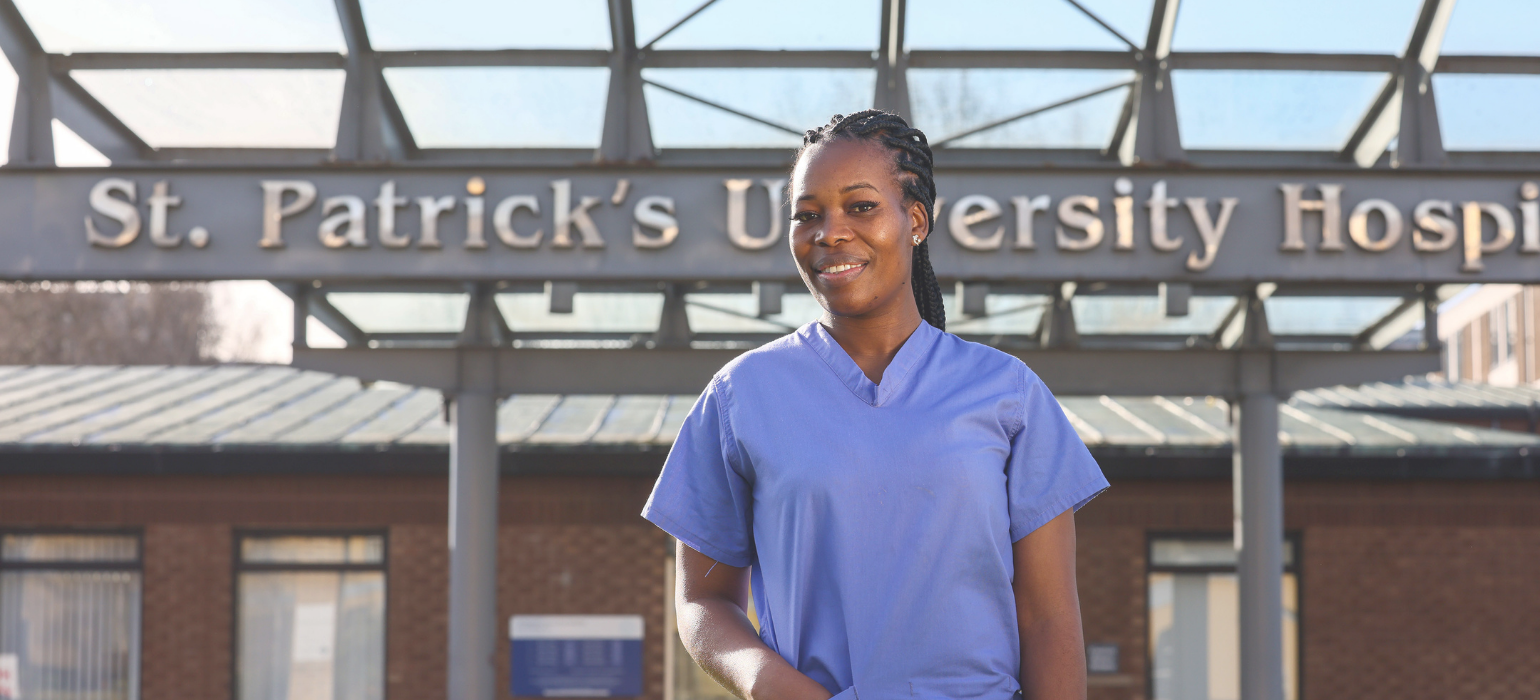
Thomas Beaumont is a staff nurse with us at St Patrick’s Mental Health Services. He shares what it’s like to work with our nursing team and what a day in the life of our mental health nurses looks like.
I completed my nursing training in St Patrick’s University Hospital and qualified in 2018. Since then, I have been working as a ward-based staff nurse on the Dean Swift Ward. It’s a very busy ward and every day is different.
The 13-hour shifts sometimes feel like just a few hours. I am lucky to work with such a great team; in mental health nursing, it is so important to have a team that works well together, and I value their comradeship greatly.
It’s Monday, 6:15am, and I am getting ready to begin the final day of a three-day working weekend. After snoozing my alarm numerous times, I’m on the road for 6:40am - it’s important to get 20 minutes of bus lane use as it’s a rush into the city!
Once I arrive in work, I join my colleagues for handover, which includes a review of all service users. When handover finishes, tasks for the morning are divided between staff.
Each day is different depending on the handover. Tasks include completing a check on all service users every 15 minutes throughout the day; completing a ward search; waking service users up; encouraging them to attend the dining room for breakfast; and to attend activities of daily living for people who need more support.
Now it’s time for my own breakfast; I have a coffee and some food in the canteen, Ridgeways, and a catch-up with my colleagues.
The first half of the day flies in. Checking vital signs, encouraging exercise ,and attending multidisciplinary team meetings are all part of the psychiatric nurse’s role.
Spending time with the service users is also a key part of my day, and by talking to service users one-to-one, it gives me an opportunity to check in with them on how they’re feeling.
It’s a dry, sunny day so I spend some time in the garden with a gentleman, and we discuss some distress tolerance skills that he can use to manage his symptoms.
Today, we also have some second-year student nurses on the ward. I bring one along to practice the skills of administrating an intramuscular injection. This can be daunting for a student, so we spend some time afterwards discussing how it went.
For lunch, I take the opportunity to socialise with colleagues who I have also spent the last two days on 13-hour shifts with. During this break, we leave the hospital, go for a walk, coffee and lunch as a group. There are a good few options near us – from the Phoenix Park or IMMA gardens for a walk to lots of cafés in the Liberties, Kimainham and even Smithfield.
Back to the ward, the afternoon includes lunch for service users, medication rounds, group programmes, some more one-to-one time with service users, and linking in with service users who are currently availing of the Homecare Service. Between the hours of 2pm and 4pm, we also have visiting hours, when service users can welcome family and friends – this is a lovely time.
New admissions are frequent and always involve completing a comprehensive nursing assessment. We also have discharges and transfers to other wards. Today, I say goodbye to a lady we nursed for over two weeks on the ward - it’s great to see her recovery progress.
The evening is spent supervising dinner for service users, doing medication rounds, and updating service users’ charts, including composing a daily progress note, updating care plans and key working. All of these tasks help us to evaluate how the service user is doing and to highlight any progress made or signs of deterioration.
Since the pandemic began, there have been many changes and adaptations to a nurse’s working day. These include antigen testing and symptom checks for staff. The wearing of masks and Personal Protective Equipment (PPPE) gear; ensuring limited numbers of service users in dining rooms and communal areas at any one time; and testing of service users are among the other tasks that have become part of a nurses’ day.
As the shift comes to a close, there may be a debrief with staff and service users over any risk or safety issues that arose from the day’s shift. It’s then time to hand over to the night staff.
At 8:30pm my shift finishes, and, with handover complete, it’s time to go home. Usually I spend my evenings going for a run or to the gym, or I may go to see family or socialise with friends. This evening, I’m trying to get my holiday plans sorted for the summer. I’m planning to spend a couple of weeks traveling around different countries within the Balkan region, including Croatia, Bosnia and Montenegro.
I can’t wait!
Find out more about our nursing team
Continue to…
How to deflect a negative mood by changing our thoughts: a service user perspective


